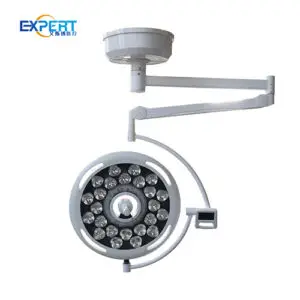Адрес
304 North Cardinal St.
Дорчестер-центр, Массачусетс 02124
Часы работы
С понедельника по пятницу: с 7:00 до 19:00.
Выходные: 10.00 - 17.00
Добро пожаловать в мой блог!
Прежде чем мы погрузимся в контент, я бы хотел, чтобы вы присоединились ко мне на моих платформах социальных сетей, где я делюсь большим количеством идей, взаимодействую с сообществом и публикую обновления. Вот как вы можете связаться со мной:
Фейсбук:https://www.facebook.com/profile.php?id=61554436086024
LinkedIn:https://www.linkedin.com/showcase/99316550/admin/dashboard/
Ютуб:www.youtube.com/@pawsjoy-ci2cp
ТикТок:www.tiktok.com/@pawsjoypetsupplies
Теперь давайте начнем наше путешествие вместе. Надеюсь, вы найдете здесь контент проницательным, интересным и ценным.


In the field of medicine, precision and clarity are vital during surgeries, making proper lighting indispensable. The right light sources for surgical equipment ensure surgeons have optimal visibility, reducing the risks associated with poor lighting. With advancements in technology, various light sources have been developed to cater to the needs of modern operating rooms.
This blog will explore the importance of selecting the best light sources for surgical equipment, their features, benefits, and how to choose the right option for your medical facility.
Surgical procedures demand exacting standards, where even minor visual impediments can lead to complications. High-quality light sources enhance visibility, ensuring that surgeons can differentiate between tissues, locate anomalies, and perform procedures with precision.
Choosing the right light sources for surgical equipment is an investment in the safety and efficiency of healthcare operations.
Several types of light sources are used in surgical environments. Each type has its unique benefits and is suited to specific applications.
LED lights are widely used in modern surgical settings due to their energy efficiency, brightness, and long lifespan.
Halogen bulbs have been a staple in surgical equipment for decades.
Xenon light sources provide a brighter and more natural light spectrum, closely mimicking daylight.
Fiber optic systems transmit light to precise locations, often used in endoscopic procedures.
While less common, these lights are sometimes used for specialized surgical and diagnostic applications.









When evaluating light sources for surgical equipment, it’s essential to prioritize specific features that enhance their functionality and compatibility.
Brightness, measured in lux, determines the clarity of the surgical field. High-quality surgical lights provide adjustable brightness levels, ensuring optimal visibility.
CRI measures how accurately a light source reveals the true colors of objects. A CRI of 90 or higher is ideal for surgical applications.
Minimizing heat emission is crucial for maintaining a comfortable operating environment and preventing damage to sensitive tissues.
Durable lights with extended lifespans reduce maintenance costs and ensure consistent performance.
Adjustable designs and compatibility with various surgical tools make light sources more versatile and user-friendly.
The following table compares key features of popular light sources for surgical equipment, helping you make an informed decision:
| Тип | Brightness (Lux) | ЦНИИ | Lifespan (Hours) | Тепловыделение | Приложения |
|---|---|---|---|---|---|
| Светодиодные фонари | 160,000 | 95 | 50,000 | Минимальный | General and advanced surgeries |
| Галогеновые фары | 120,000 | 90 | 2,000 | Умеренный | Общая хирургия |
| Xenon Lights | 180,000 | 98 | 6,000 | Низкий | High-precision surgeries |
| Fiber Optic Lights | 140,000 | 94 | 40,000 | Минимальный | Endoscopic procedures |
| Infrared/UV Lights | Переменная | 85 | 10,000 | Минимальный | Specialized applications |


Selecting the right light sources involves balancing technical specifications with practical needs.
By following these steps, you can select light sources that enhance surgical precision and efficiency.
Investing in superior light sources for surgical equipment offers numerous benefits for healthcare facilities.
High-quality lighting improves accuracy, reduces errors, and ensures better patient outcomes.
Energy-efficient and durable lights reduce operational and maintenance costs over time.
Proper lighting minimizes eye strain and enhances the comfort of surgeons and staff during lengthy procedures.
The right light sources for surgical equipment are a cornerstone of successful surgical practices. By prioritizing brightness, color accuracy, durability, and compatibility, healthcare facilities can optimize their operating environments.
LED, halogen, xenon, fiber optic, and specialized lights each offer unique advantages, catering to different surgical needs. Use the comparison table and selection tips provided in this blog to make an informed decision.
Investing in high-quality light sources enhances surgical precision, reduces operational costs, and improves patient outcomes, making it an essential choice for modern medical facilities.
The most common light sources include LED, halogen, xenon, and fiber optic lights, each suited for specific surgical applications.
CRI determines how accurately a light source reveals true colors, which is crucial for distinguishing tissues during surgeries.
Consider factors such as brightness, CRI, lifespan, heat emission, and compatibility with existing equipment.
LED lights are generally superior due to their energy efficiency, longer lifespan, and minimal heat emission.
Fiber optic lights provide precise and focused illumination, often used in minimally invasive and endoscopic procedures.
